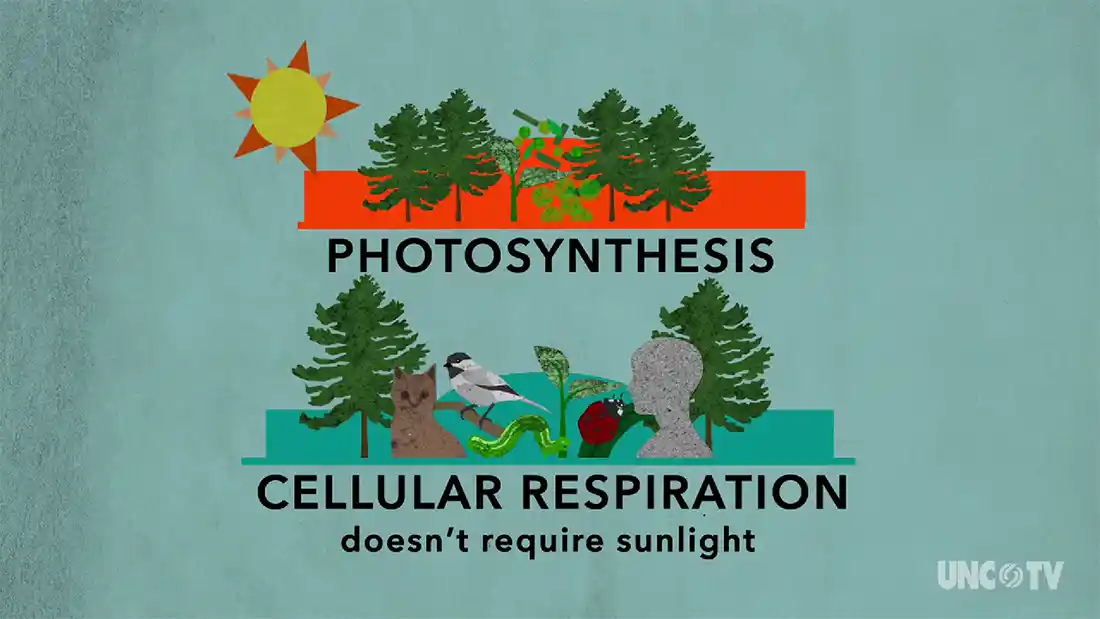

Respiration, photosynthesis, cellular, oxygen, glucose, gas exchange, energy, daytime, nighttime, aerobic, anaerobic, oxygen debt.
Respiration is a process that occurs in animals (and humans) and plants, and is the result of taking in air of some sort to process into energy.
Let's find out how it works.
There are two types of respiration:
Aerobic respiration: this process uses oxygen to convert into glucose and energy. The oxygen is gained from carbon dioxide and water, and in then converted into the glucose and energy needed.
Anaerobic respiration: this process doesn't use oxygen to create glucose. It still creates glucose, but in smaller amounts than aerobic.
We respirate during the entire day, whether it is day or night. Sometimes, it happens faster, like when we go out for a run, and need to breathe in more, or slower, like when we are sleeping. The processes are different for us, depending on what we do. Let's use the examples to explore a bit.
When we run, admittedly, we need to use the process of respiration quickly. We breathe faster, and heavily, allowing our body to gain the correct amount of oxygen. But what happens when you stop?
When you stop running, you still need to breathe in and out faster, until you recover from the exercise. What has happened here is something called oxygen debt. With the large amounts of oxygen your body needs to recover, it has to create glucose from the oxygen or reserves in your body, as well as the new oxygen you breathe in.
This in turn creates lactic acid, which is commonly also known as a stitch. That's right, when you stop exercising, sometimes you may pull a leg for cramp, or you will have a stitch. This is a build up of lactic acid in certain areas of the body.
So, while aerobic respiration is done though the gas exchange of your lungs while you run and breathe quickly in and out, when you stop running, the process reverts to both aerobic and anaerobic in form of breakdown of glucose to lactic acid.
Plants are similar in the fact that they process oxygen, but in a different manner - through photosynthesis. We know that during the day, plants will create oxygen from carbon dioxide and water, aloing with the glucose they need to grow and continue creating more. This is an example of aerobic respiration in plants.
The following still is from a video on pollination, with the following details:
Please click on the image to view the video.

So, how does anaerobic respiration work in plants? Well, respiration continues during the night, but at a much slower rate. This is because there is no sunlight for it to photosynthesise. Instead, it uses cellular respiration, which enables it to produce minimal amounts of glucose needed to survive the night.
Plants have a series of structures called stomata, which allow the plant to have gas exchange. They open and close at intervals to release oxygen back into the atmosphere. At night, these stomata close and don't open, storing the oxygen ready for the next day. While respiration occurs at night, the leaves then become oxygen-rich.

All organisms respire. Whether it is a plant, animal, human or fish, they all respire. They all create the ATP from organic molecules anaerobically. Aerobic respiration requires the intake of oxygen, thus ventilation and gas exchange is needed.
Disclaimer | About Me | Sitemap
Website design by SyntaxHTML.



Blue icons adapted from icons courtesy of Smashicons.com